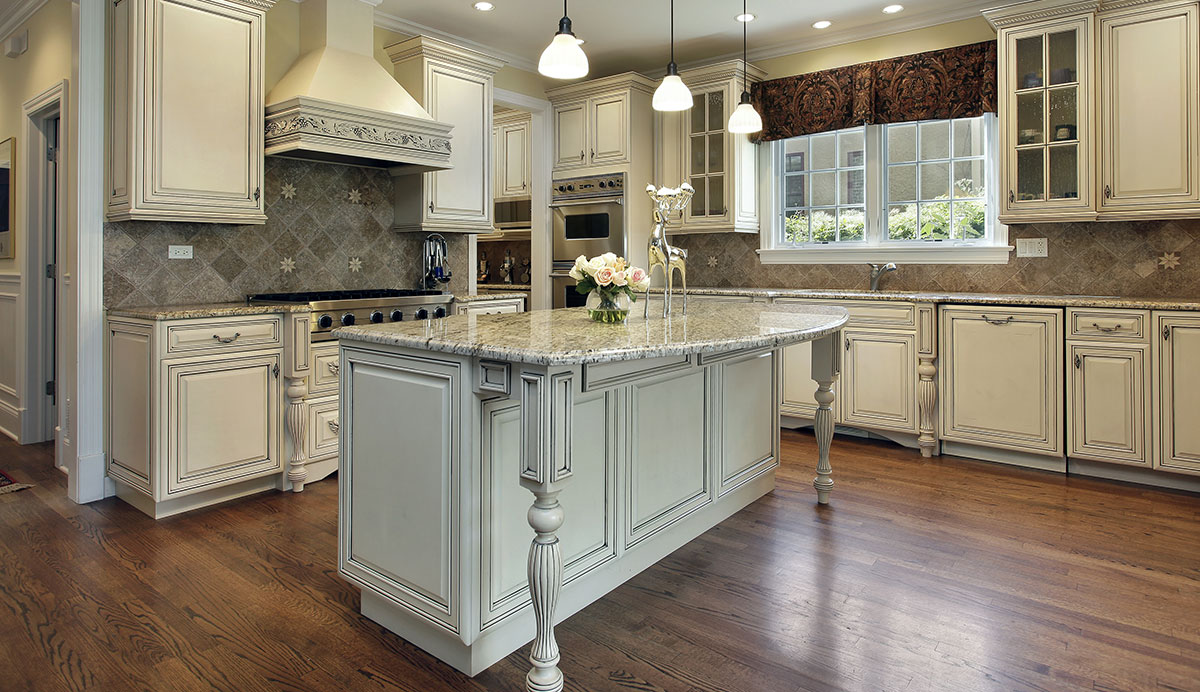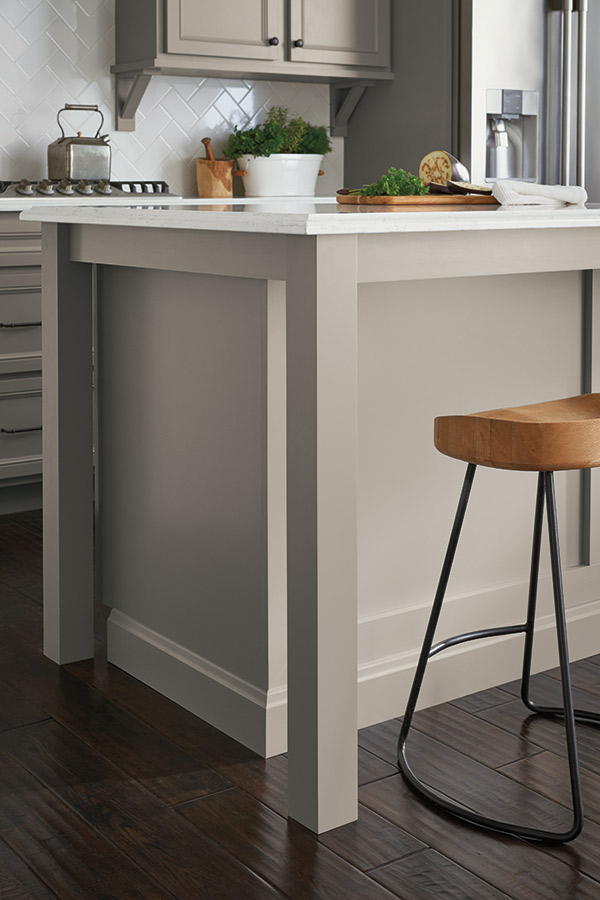Key Factors To Consider for Locating the most effective Legs For Kitchen Area Island for Your Style
When picking the ideal legs for your kitchen area island, numerous essential considerations come into play that can considerably impact both capability and aesthetics. The option of design, elevation, and product have to straighten with your total kitchen area layout to make sure an unified appearance. In addition, security and maintenance requirements are vital for long-term use and convenience of care. Comprehending these variables can enhance your kitchen's usefulness and visual appeal, yet the nuances of each factor to consider can frequently be forgotten. What implications might these choices have on your cooking area's total environment?
Determine Your Style Choice
When picking the excellent legs for your cooking area island,Establishing your style choice is crucial. The legs of your cooking area island not only offer a useful function but also contribute considerably to the total aesthetic of the room. As a result, recognizing your design style-- be it modern, rustic, standard, or commercial-- is necessary.
For a modern kitchen, consider smooth, minimalistic legs that match clean lines and open rooms. In comparison, a rustic setup may profit from more durable, farmhouse-style legs made from redeemed materials. Typical cooking areas typically prefer transformed or elaborate legs, which can include a touch of elegance and refinement. A commercial visual might call for metal legs that highlight a raw, unfinished appearance.
Additionally, consider the elevation and percentage of the legs in relationship to the island's surface area. This ensures the aesthetic equilibrium and functionality necessary for everyday usage. Evaluating the existing components in your kitchen, such as kitchen cabinetry and devices, can additionally direct your choice, making certain cohesiveness in layout. Eventually, your design preference will certainly influence not only the option of legs but also the general harmony of your cooking area's style.
Choose the Right Product
Choosing the ideal material for your cooking area island legs is pivotal in making sure both durability and aesthetic charm. Various materials offer distinctive benefits, and the choice often mirrors your style preferences and functional requirements.
Timber is a popular choice, offering warmth and convenience. It can be tarnished or repainted to match your kitchen area decoration, making it versatile to numerous styles, from rustic to modern. Timber might call for routine upkeep to preserve its look and integrity.

If you seek a special touch, think about acrylic or glass products. They can produce an illusion of area and agility in your cooking area, making them an excellent selection for smaller sized locations - Legs For Kitchen Island. These alternatives may call for careful handling and maintenance to avoid scrapes.
Eventually, the material you pick must align with your kitchen area's general design, making certain that the legs serve both useful and decorative purposes.
Take Into Consideration Elevation and Percentages
When designing a kitchen area island, height and proportions play an essential duty in guaranteeing performance and convenience,. The conventional height for a kitchen area island normally varies from 36 to 42 inches, straightening with standard counter heights or bar heights, respectively. This measurement is essential for harmonizing with bordering counter tops and stools, making it possible for simplicity of use during dish preparation and social interactions.
Additionally, the island's proportions need to complement the overall kitchen area layout. A well-proportioned island needs to not bewilder the area; instead, it must develop a balanced visual. Consider the ratio between the island's width and size, guaranteeing it gives ample surface without crowding the kitchen. A basic guideline is More Help to maintain a width of 24 to 48 inches, facilitating motion and access.
Additionally, the elevation of the legs or base can affect the visual charm and capability. Taller legs might provide a more modern, airy feeling, while much shorter ones can stimulate a traditional, based appearance. Eventually, thoroughly taking into consideration height and percentages will certainly lead to a kitchen island that is both functionally reliable and visually enticing, boosting the total design of the space.
Assess Stability and Longevity
A cooking area island's legs should not only match its elevation and proportions yet also offer sufficient security and longevity to sustain daily tasks. The legs are important to the total functionality of the island, as they birth the weight of the kitchen counter and any type of extra tons, such as home appliances or food preparation jobs.
When assessing security, it is important to take into consideration the leg layout and material. As an example, sturdy metal or solid hardwood legs usually offer premium stamina compared to lighter products like engineered wood or plastic. In addition, a bigger base can enhance stability, decreasing the danger of tipping or wobbling throughout usage.
Resilience is equally crucial; the legs must stand up to deterioration from everyday usage. Think about surfaces that secure against scratches, dents, and dampness, particularly in a cooking area atmosphere. Furthermore, evaluate the top quality of construction, such as attachments and joints, which can significantly impact the legs' long-lasting performance.
Inevitably, purchasing well-crafted legs that prioritize stability and longevity will ensure your kitchen island continues to be a trusted work space for years to find, enhancing your culinary experiences while maintaining aesthetic charm.
Aspect in Upkeep and Treatment
Maintenance and care are vital considerations for making certain the durability and efficiency of kitchen area island legs. When picking legs, it is important to examine the products used, as different options require varying levels of upkeep. Wood legs might require periodic refinishing or securing to stop dampness damages and scrapes, while metal legs may require routine polishing to keep their shine and prevent rust.
Additionally, the surface related to the legs can influence upkeep requirements. A high-gloss covering might be much easier to clean however can show finger prints and scrapes more conveniently than a matte surface. It is suggested to pick products and coatings that match your lifestyle; as an example, if you often hold events, choose for resilient products that can stand up to wear and tear.
In addition, take into consideration the cleansing procedure associated with maintaining these legs. Smooth surface areas often call for minimal effort, while intricate layouts might gather dust and crud, demanding even more view publisher site labor-intensive cleansing techniques. Legs For Kitchen Island. Inevitably, considering the maintenance and treatment needed for your chosen kitchen island legs will certainly not only improve their visual appeal yet likewise ensure their practical stability in time
Conclusion
To conclude, picking the ideal legs for a cooking area island demands mindful factor to consider of various elements, consisting of layout style, product option, upkeep, security, and height. Each aspect plays a crucial role in making certain that the legs not just enhance the visual charm of the kitchen however likewise give the required support and toughness for day-to-day use. A knowledgeable decision will ultimately add to a useful and aesthetically pleasing cooking area environment.
The legs of your kitchen island not just serve a useful purpose yet additionally add significantly to the total aesthetic of the space.Maintenance and care are important factors to consider for making certain the longevity and performance of kitchen island legs. Wood legs might call for regular refinishing or securing to protect against moisture damages and scrapes, while steel legs may require normal brightening to keep their sparkle and stop rust.
Eventually, factoring in the upkeep and treatment needed for your chosen kitchen island legs will certainly not just improve their visual charm yet likewise ensure their functional stability over time.
